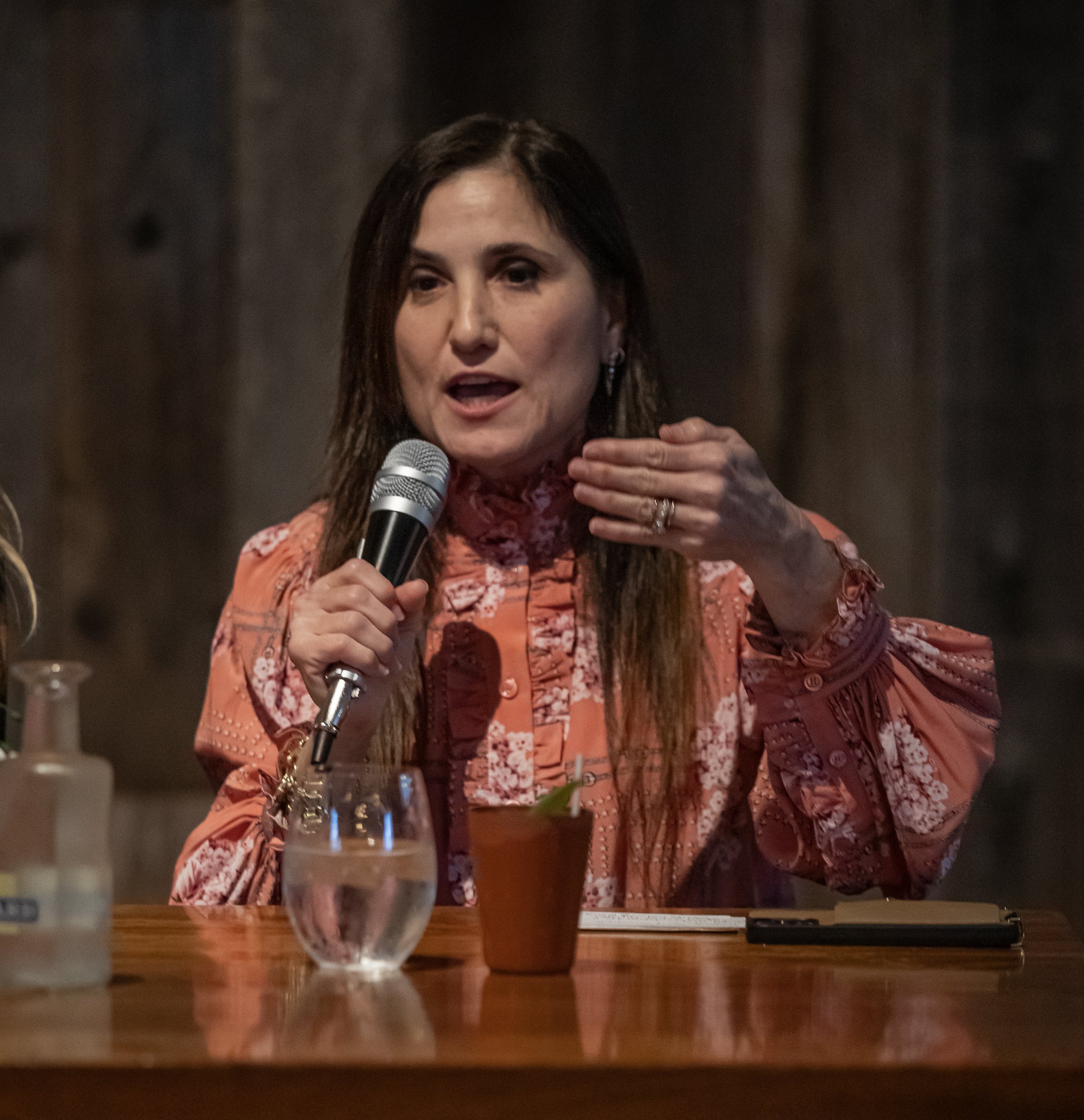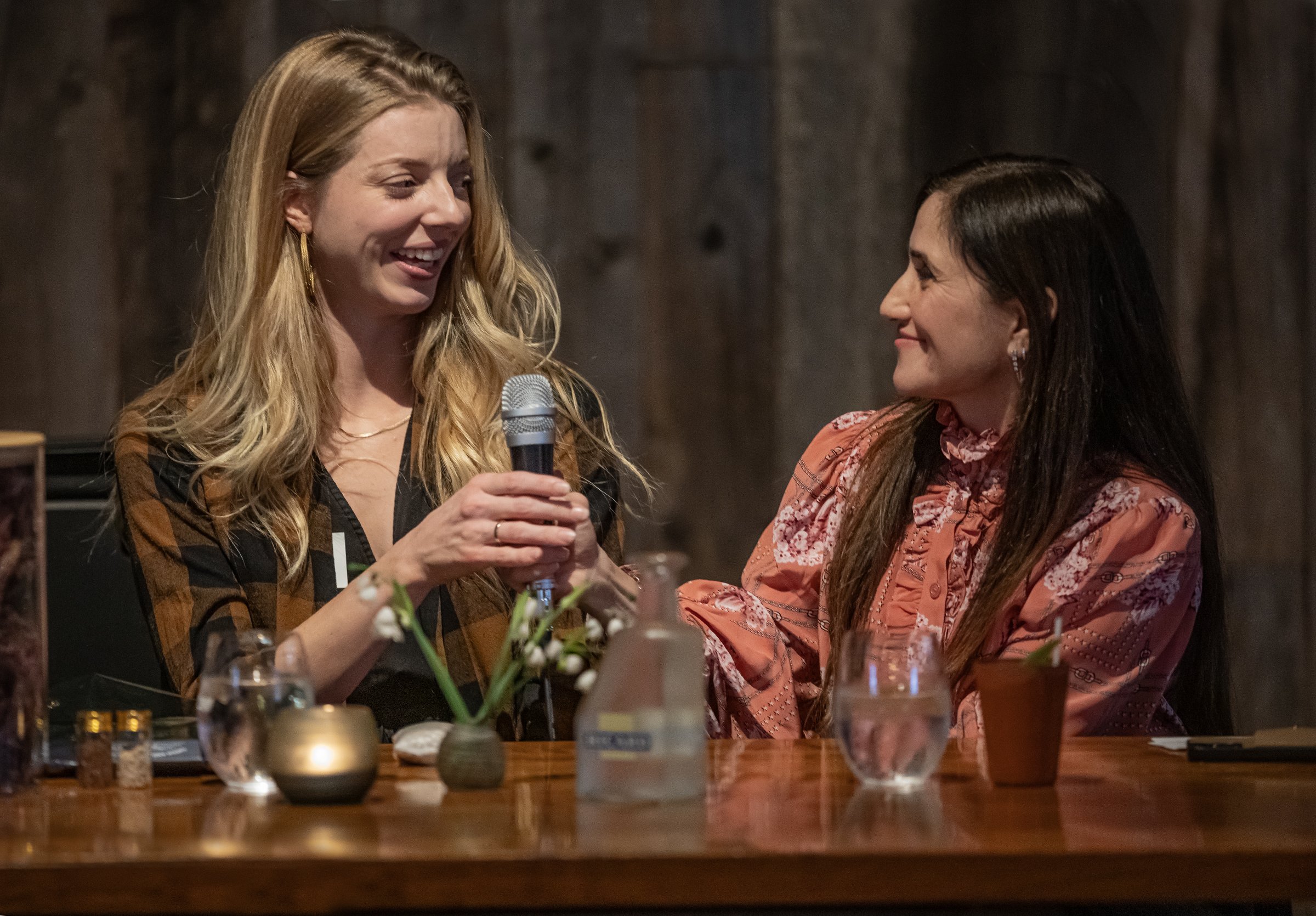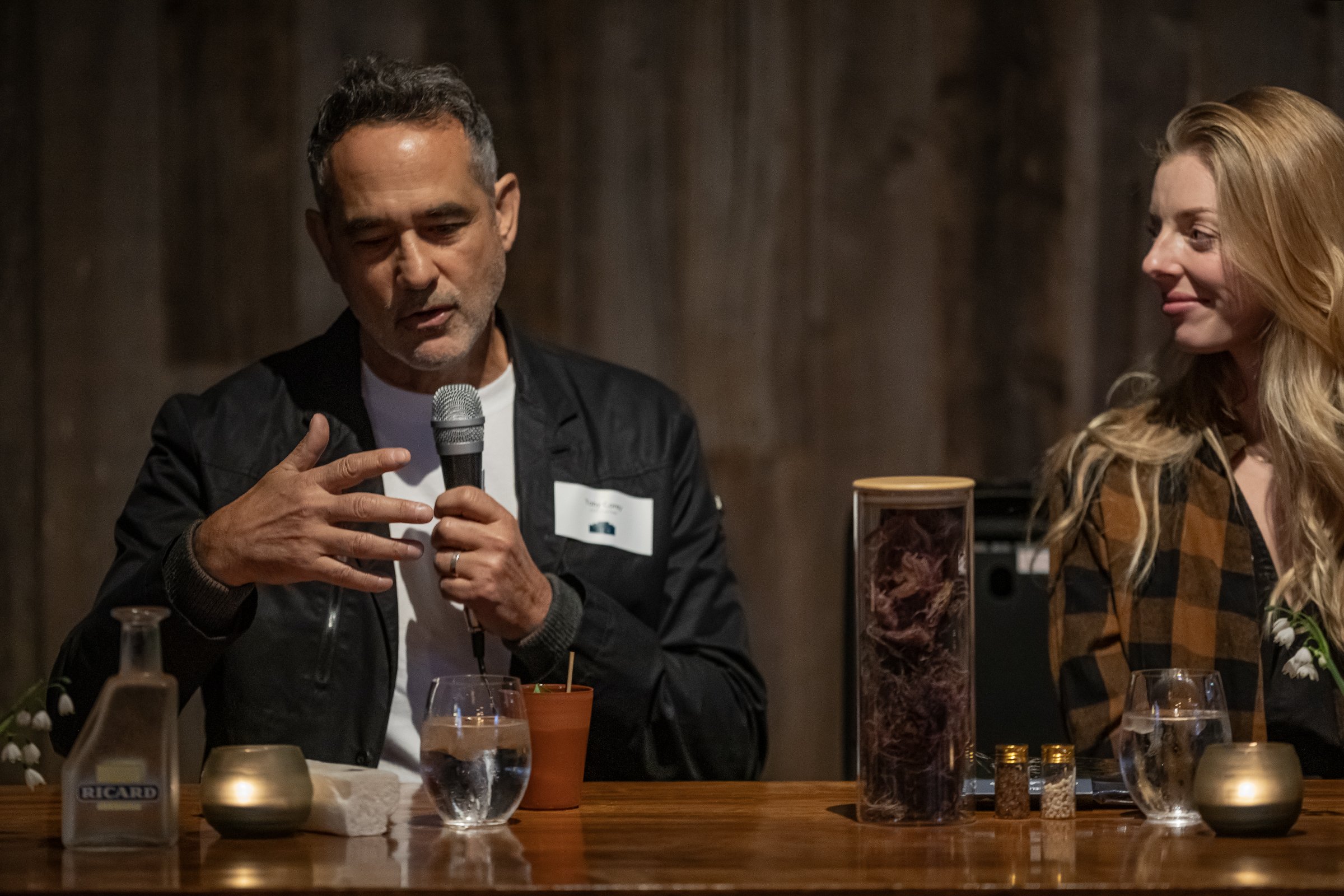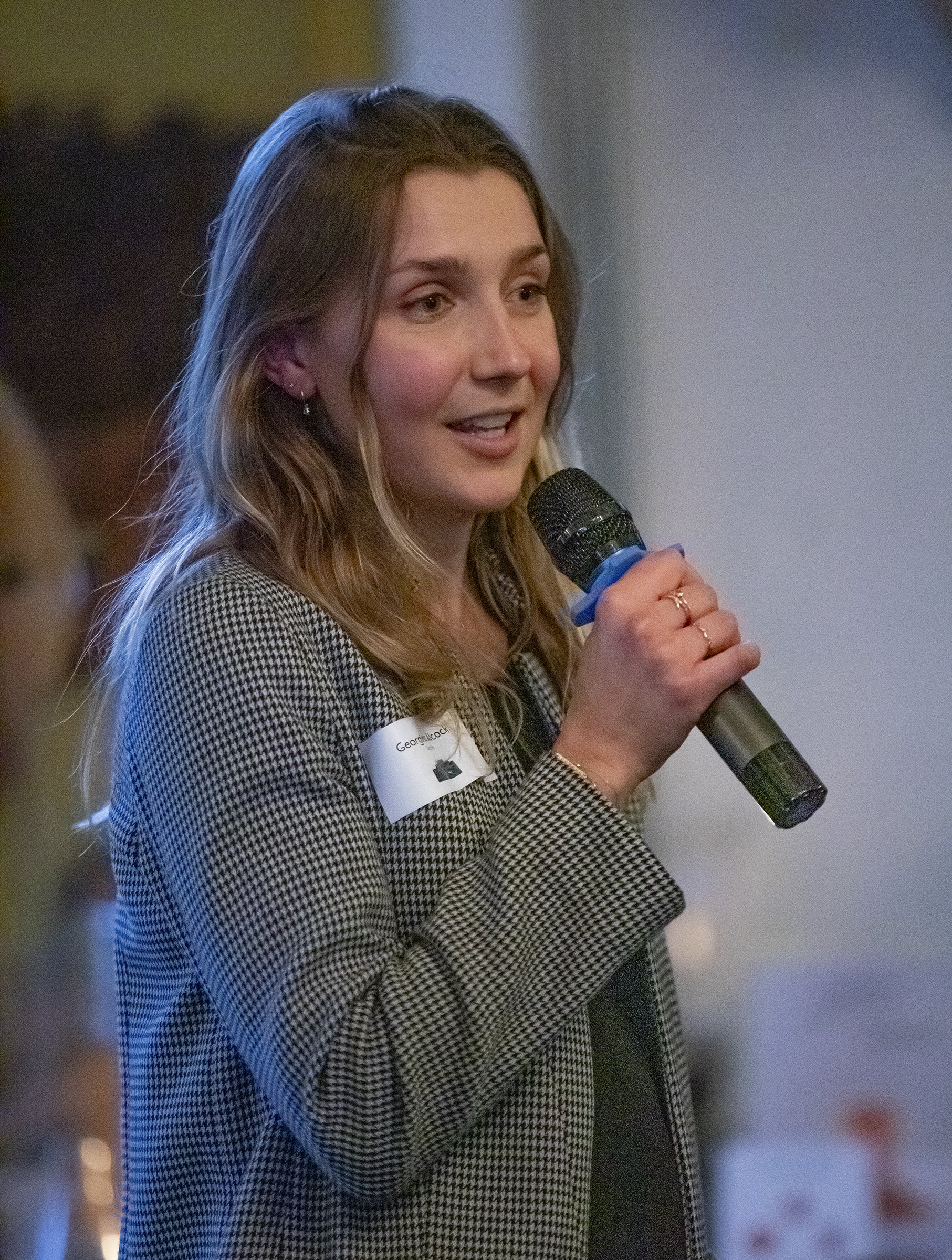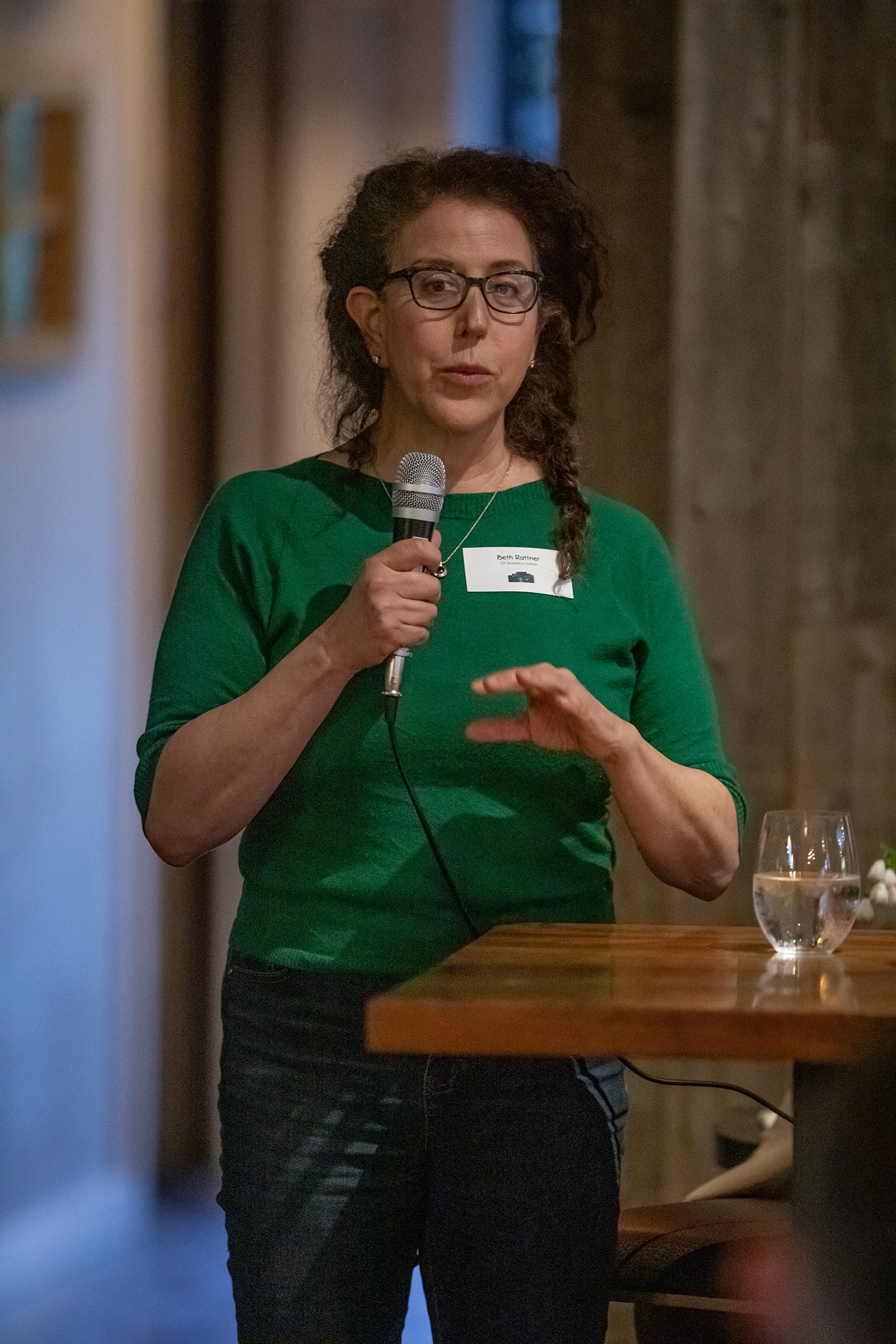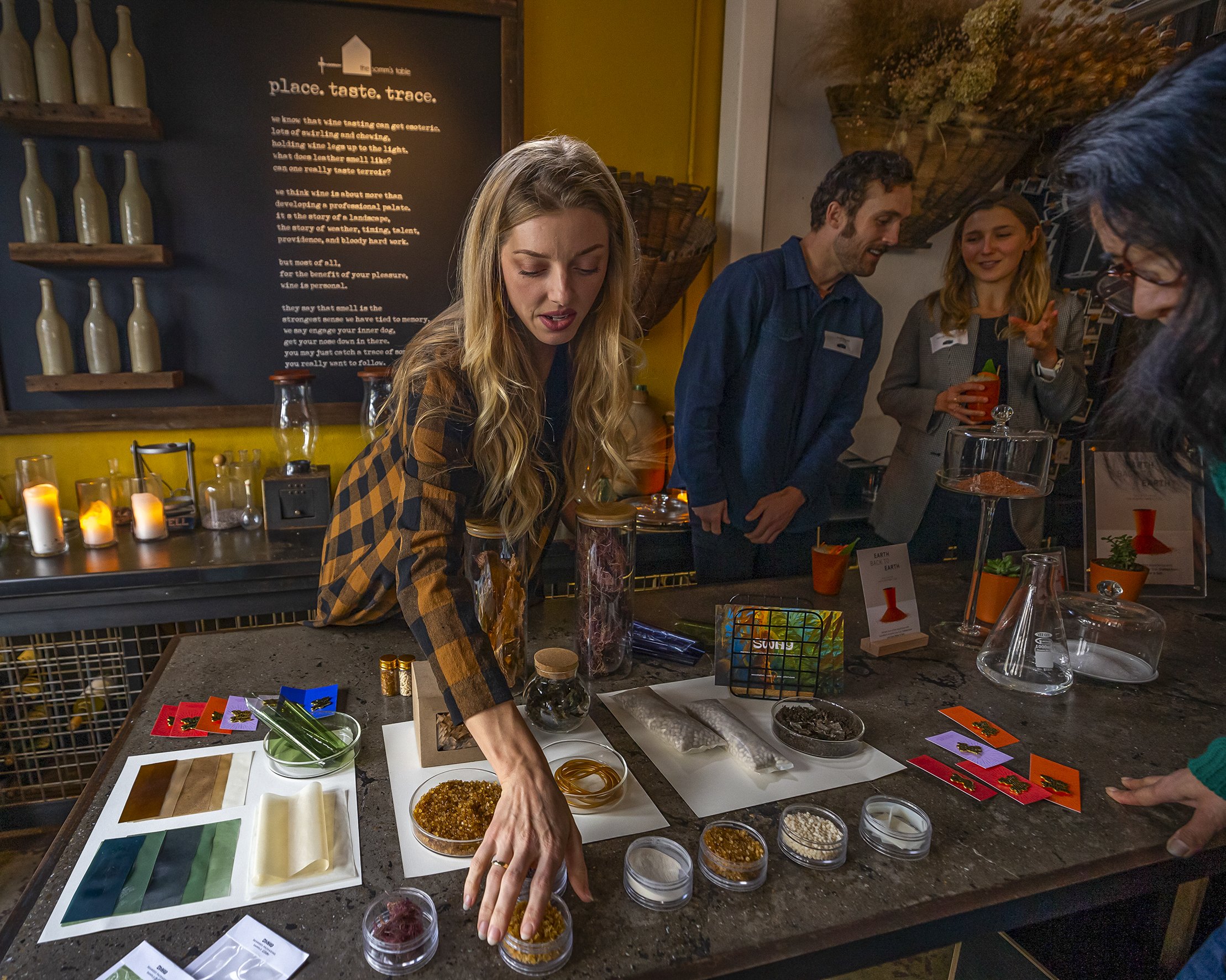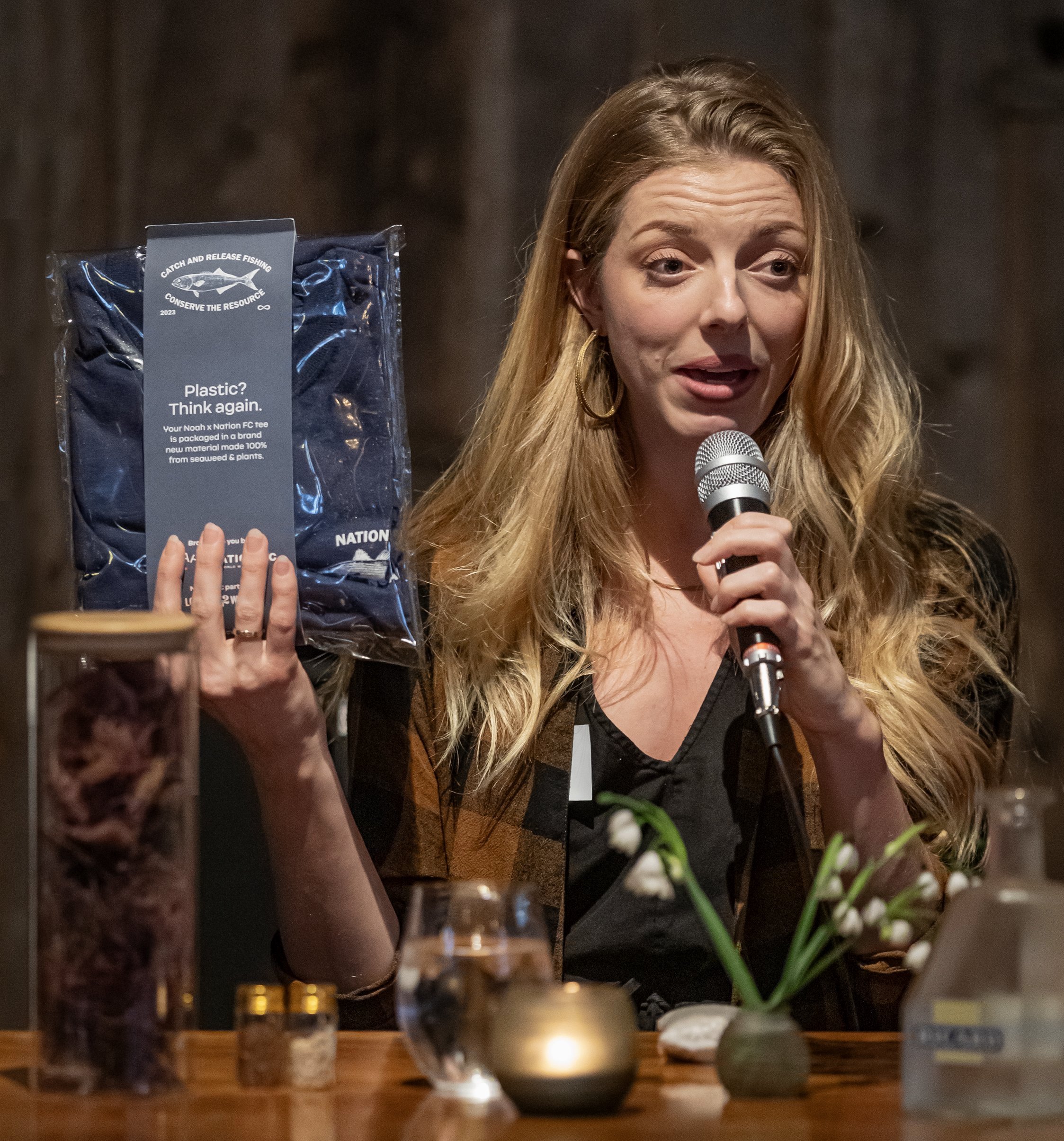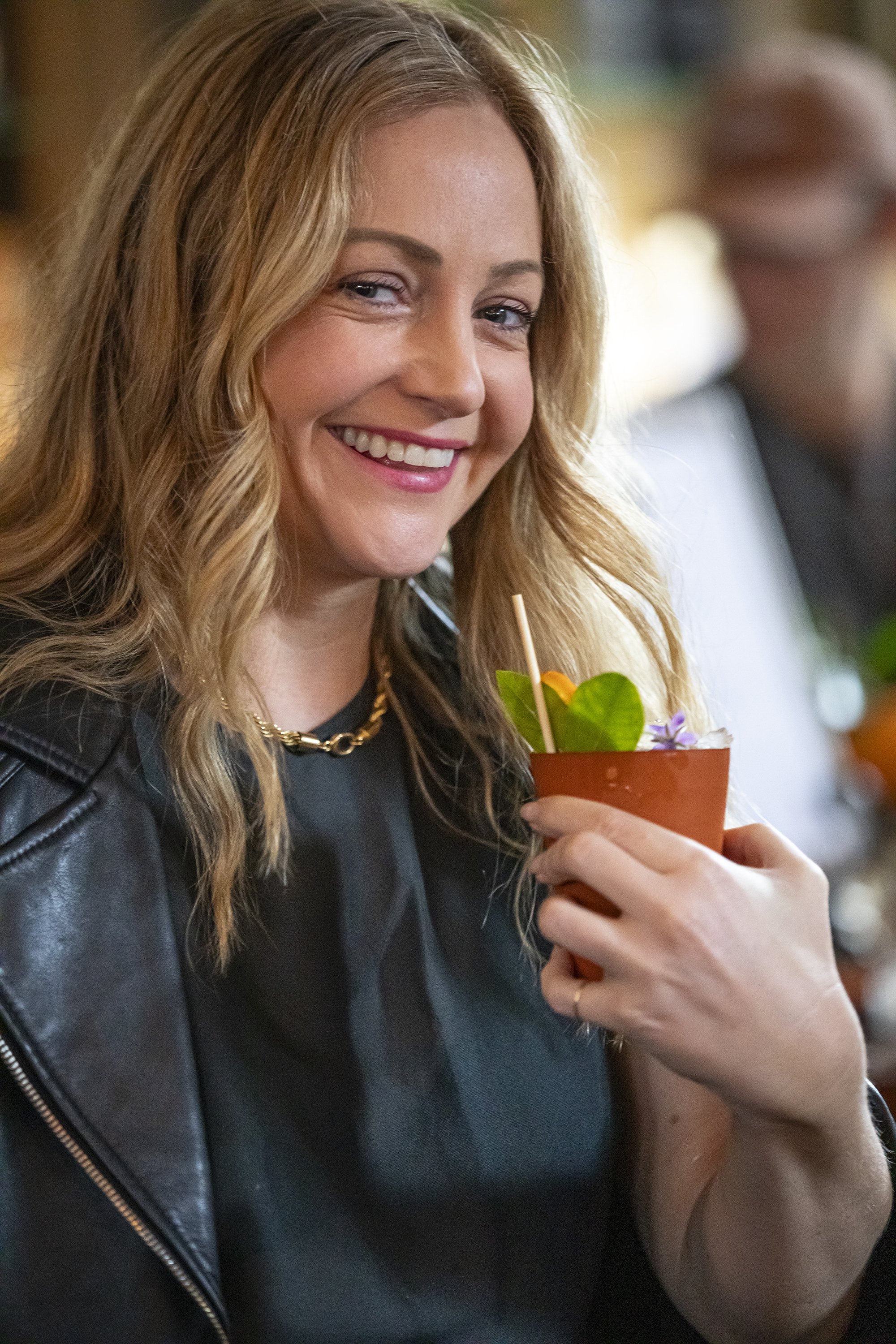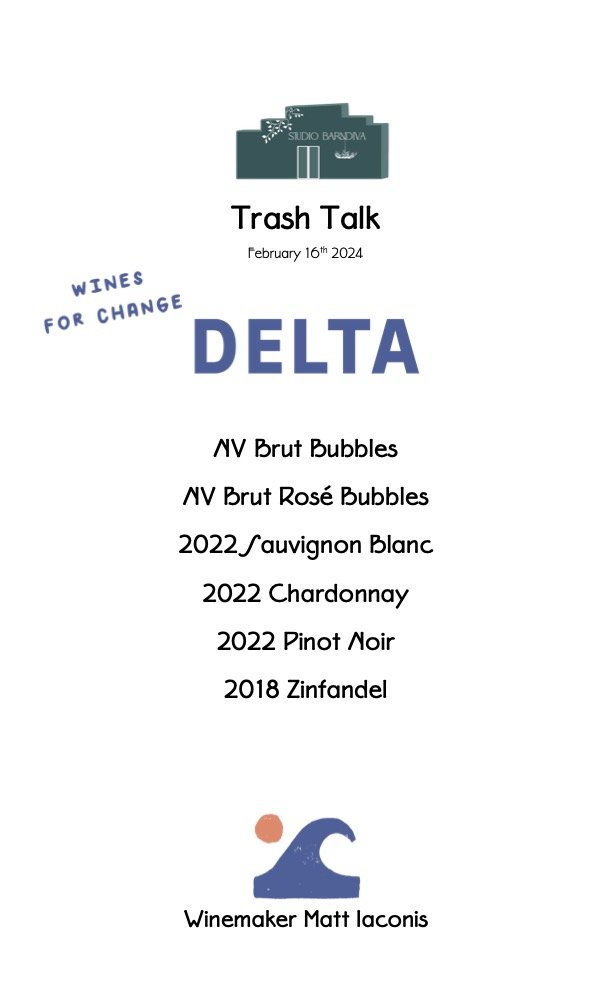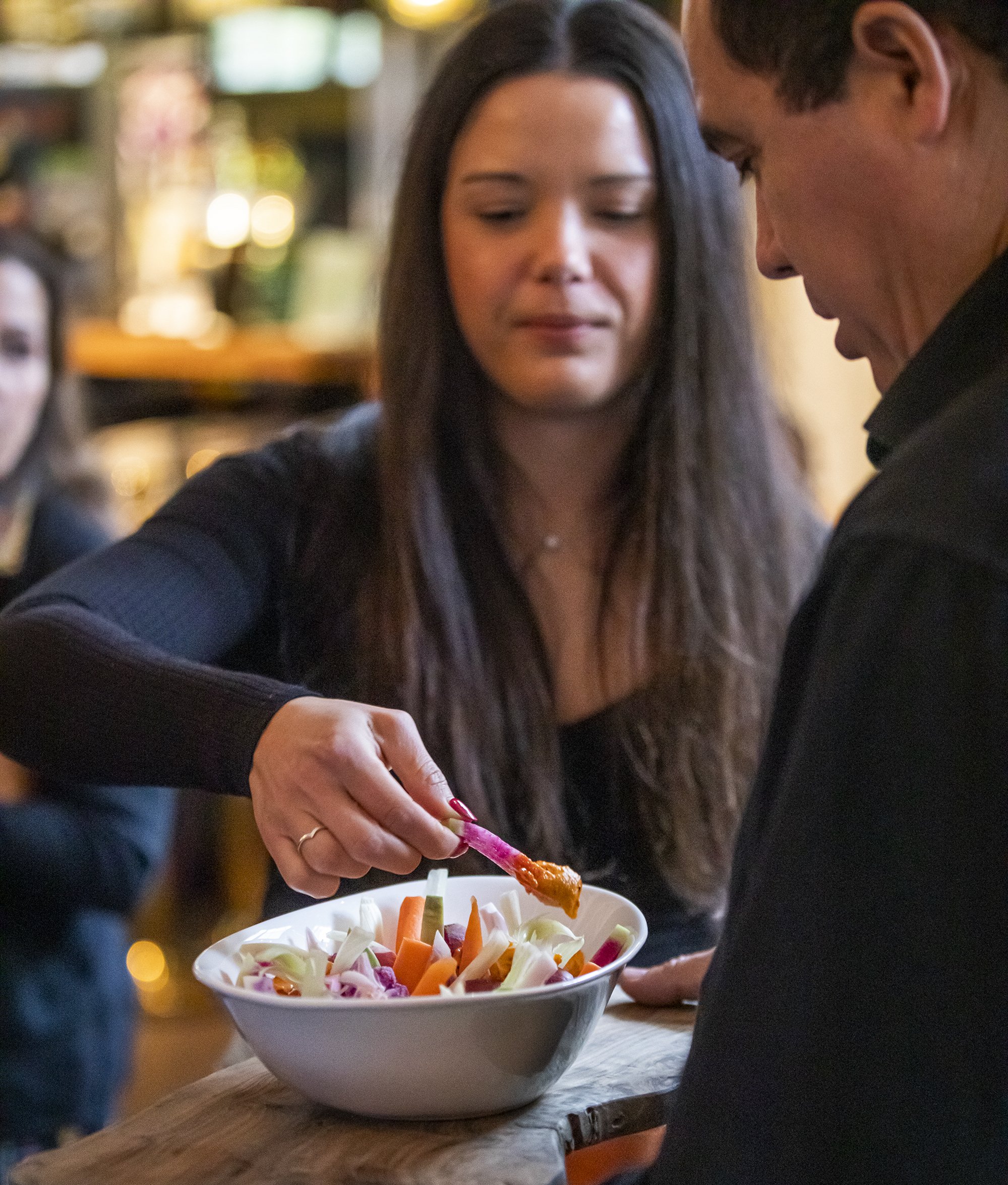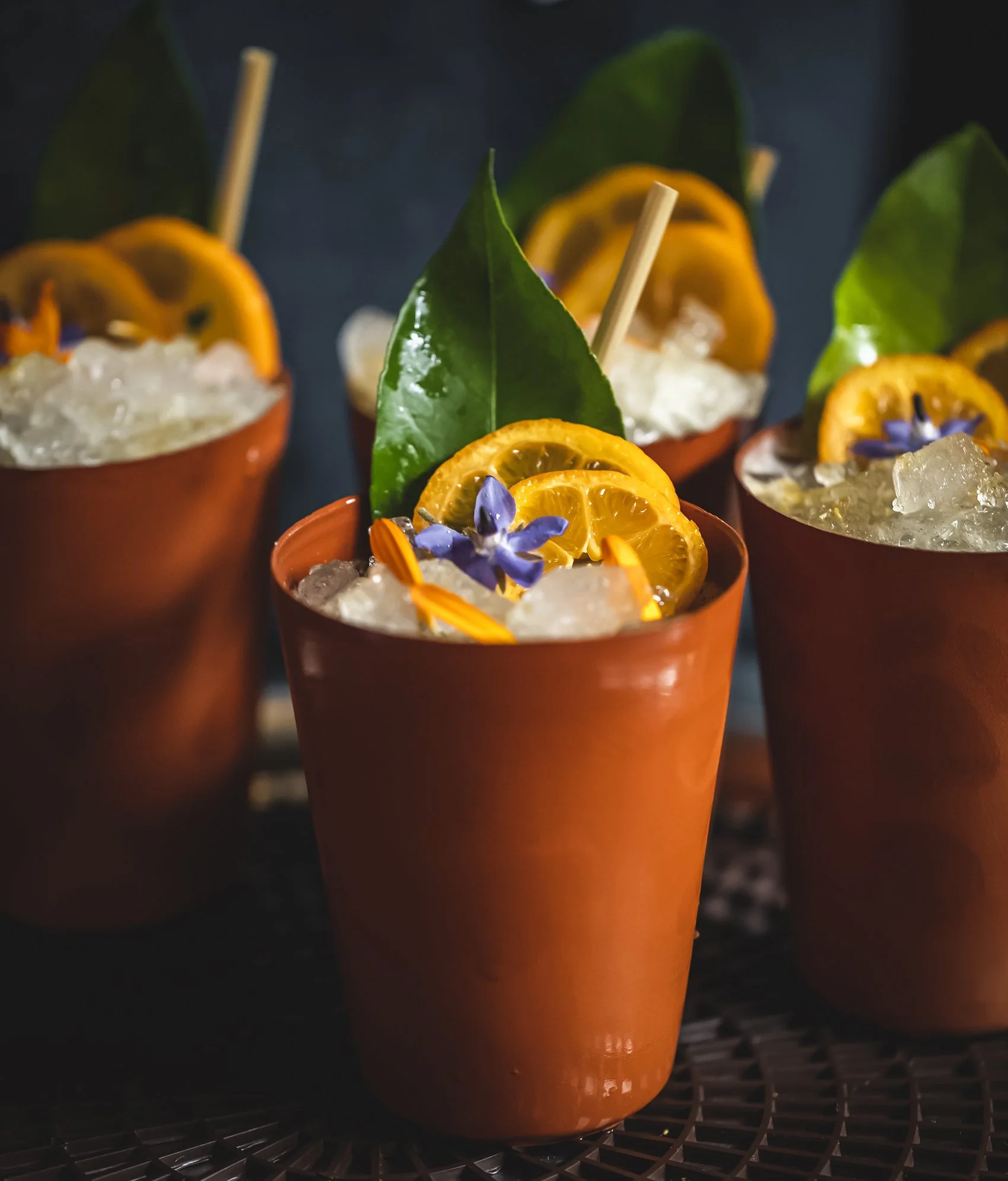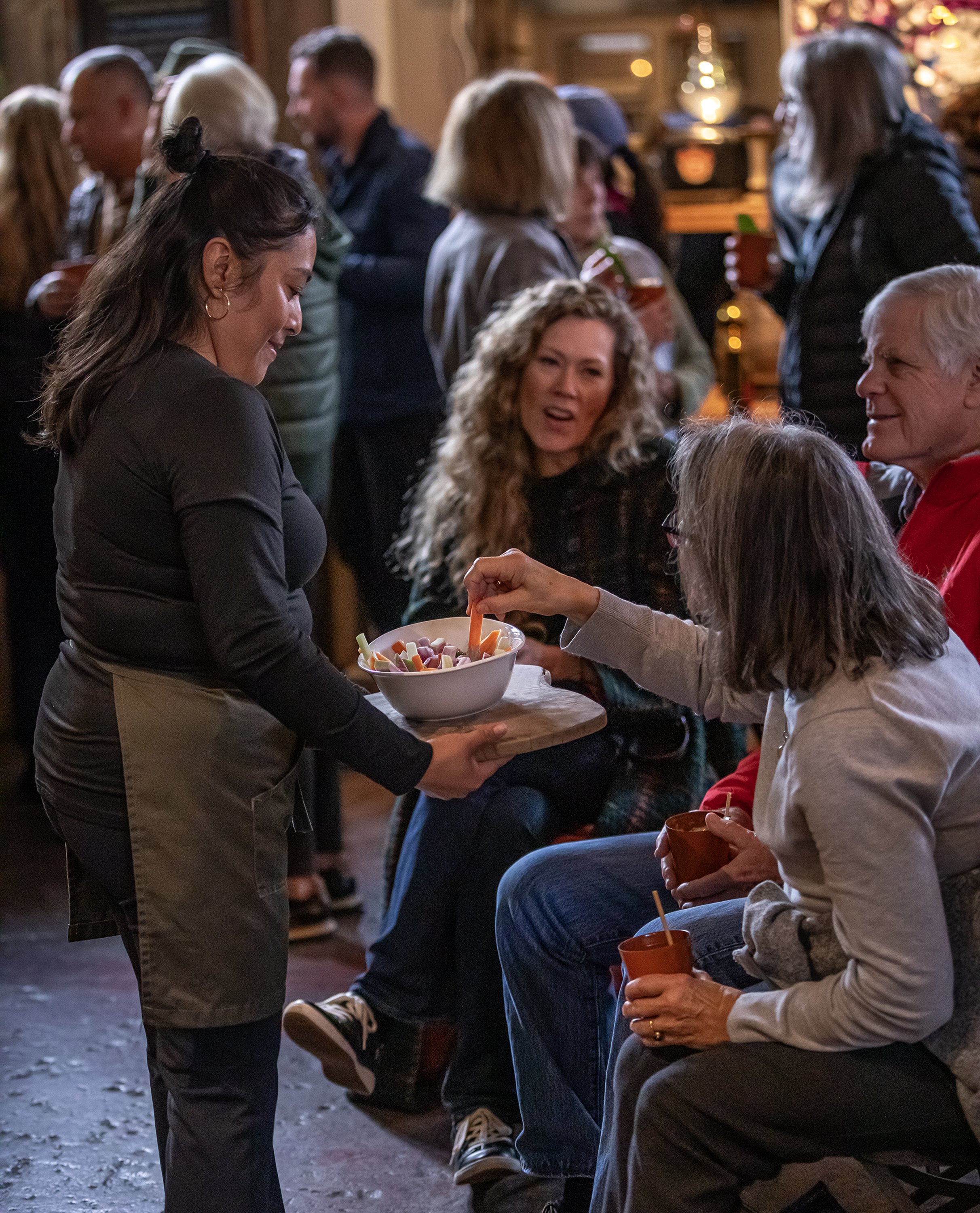Barndiva and Stay Healdsburg’s Sparkling Soirée, November 17
It was a big community driven week-end for us, and boy did we need the hit of friendly faces and the sense of the joy that can be found in creative accomplishment. On Saturday evening we helped stage the True West Film Center’s annual fund raiser honoring actor Steve Zahn which raised over $200,000. True West will bring much needed eclectic film-going back to Healdsburg, as well as launch educational programs for students, when it opens 2025.
On Sunday we put on our fancy duds and hosted Barndiva’s first ever Sparkling Soirée with Stay Healdsburg to officially launch Healdsburg’s ‘Season to Sparkle.’ We didn’t know what to expect until 200 Healdsburg habitués arrived on a drizzly cold evening ready to party, then boy did we ever - Sparkling Soirée was so much fun we are considering making it annual. When Stay Healdsburg’s Jessica Bohon first approached us a few months back about co-hosting the kick off-party for the City’s run up to the Holidays, she was looking for the secret sauce that makes our parties, especially spring’s Pink Party and summer’s Fête Blanc so popular. She was asking the right question. But what indeed goes into making a party great?
In truth we are almost too blessed with where we live when it comes to making wine the only reason you venture out to a public event. Sure, If you are visiting Healdsburg the opportunity to meet a winemaker or taste something out of the ordinary from a purveyor off the beaten track is catnip. But we’ve lived in Sonoma and Mendocino County for 40 years. Even if you are relatively new to wine country chances are someone in your immediate family or good friend makes great wine.
A plethora of factors go into hosting comprehensive collaborative experiences, especially when it comes to wine. Different terroirs, different hands, including those of the weather gods.
Rule #1 if wine is at the heart of your event: only invite winemakers and cellar masters who know what they are talking about, and truly love what they make and sell. Our ‘Sommelier For The People’ Emily Carlson is pukka on this, with personal relationships to winemakers she admires, and a curious mind (nose and palate) for new discoveries. Emily is relentless in her focus on the where and how the grapes are farmed, who is farming them. For Sparkling Soirée she was keen to showcase a smaller group than our bigger outdoor collaborative wine events. She wanted to guide guests through unique tastings that would leave them more discerning to what makes a great bubbly as we head into the season where, if our luck holds, we will be drinking quite a few of them.
We were thrilled to welcome our great friend Alexis Iaconis (above left) of @brickandmortarwines and sparkling icon Joy Sterling (above right) of @ironhorsevyds who were joined by an exciting group on Sunday evening which included @almafriawines; @amistavineyards; @bansheewinesguys; @breathlesswines; @cartographwines; @comstockwines; @crusewine; @gloriaferrerwinery; @kokomowinery; @lambertbridge; @orsifamilyvineyards; @drinkseppi; @trailmarkerwineco; and for a taste of Anderson Valley @handleycellars; @roedererestate; @scharffenbergercellers.
Rule #2 Take your inspiration for the look and feel of the party from the season - whatever the ‘reason’ or focus of the event, you can’t go wrong because It’s in our DNA to feel the seasons changing and want to follow where the weather is heading, even if we do so unconsciously. November is about seeking warmth, and scratching the itch of anticipation. The year is almost over and whether it was good or dreadful you can find myriad of reasons to raise a glass to it’s ending. This year, coming out of contentious election season, virtually everyone who stepped into Barndiva on Sunday was in the mood to find joyful relief in seeing old friends, open to the possibility of making new ones. The energy was just so much fun on Sunday night. Remember fun?
Rule #3: give your guests a reason to engage. For us this is where party games or ‘experiences’ come in that take you a step deeper into what you’ve come to celebrate. We love our scent boxes for wine events - they are mysterious and sensual and essential when it comes to expanding your knowledge of bouquet, but for Sparkle we added a Riddling Rack Game - no riddling, no method champenoise, no great bubbly people! (exception would be the wonderful pet nat we tasted). Lily Zarat, a lead server in Studio B who is studying wine walked anyone game through the technique, (its all in the wrist), then started the stop watch. How fast can it take to turn 12 sparkling wine bottles 45 degrees to the right? (a professional Riddler can turn 30,000 bottles in a day). The winning time was 2.9 seconds.
Rule #4: Whatever the season you are mining for inspiration, great parties give people a reason to dress up, down, sideways. The point being, If enough people show up wearing something they feel good in, the space around them starts to resonate with shared energy. Our Pink Party is conspicuously pink, Fête Blanc trends a subdued elegance. Sparkle turned out to be the most enjoyable dress up party of the year. It didn’t matter whether you dragged a cape from the back of the closet ( quite a few of those) went out to find the perfect item to set the upcoming season ablaze (many more), or made your ensemble as our Conversations Worth Having partner Amber McInnis did (above right). Everywhere you looked Sunday glimmered with finery in the candlelight. ( Hotel Healdsburg’s Circe Sher, above left, got the memo)
#5 Great parties need great Florals displays, subtle fresh scents. While this is a no brainer easy for us in springtime, summer, and early fall when we can party in the gardens surrounding ourselves with what we grow in Philo or sourcing from our many friends in AV and around Sonoma County, its chilly out now, and pretty bare in all our gardens. For Sparkle we filled the barn with white orchids and mums, pale ecru roses, black pussy willows, and a range of silvery green branches -huckleberry, arberry, abelia,-our farm manager and special events florist Misha Vega foraged from the farm.
Rule #6: Great parties need perfect lighting, especially if you are inside where sunlight and shadow cannot do their magic. Years ago I did an install for Barndiva after a stupendous Perrier Jouët champagne event that left us with two dozen of the Maison’s famous Japanese anemone bottles designed by art nouveau pioneer Emile Galle in 1902 for their Belle Époque Curvée I could not bear to recycle. My trusty PA K2 scrolled the names of infamous champagne drinkers (men and women) I would have liked to raise a glass with once upon a time, or still do. For Sparkle Party 2024 I pulled them out of the world so high and we danced a parade of them, with thin black candles interspersed with potted white orchids, along the bar. Guessing who the names referred to was part of the fun. (who wouldn’t want to raise a glass with Kiki de Montparnasse.. Orsen Wells? Lukka Feldman?)
#7: Music is mood. We were of two minds for Sparkling, with two buildings in play, each with tastings. Two rooms to decorate as well. Barndiva’s great friend Pamela Joyce, herself an incredible singer, recommended Jeanette Isenberg @jeanette@acoustic-resonance.com to indulge our fancy for a Bridgerton inspired violin and cello welcome to Sparkle in Barndiva, which we wanted to feel more elegant. But over in the studio we pulled out a funky NYE playlist Isabel Hales put together back in 2014, which played alongside her silent NYE compilation reel of famous film parties pre 1940’s. A looser vibe as we knew the crowd would eventually drift over there to settle, which is exactly what happened toward the end of the evening. We also loaded the Studio up with even more candles than we have for our regular dinner service, hung our cradle to cradle decorations which will stay up through the holidays, and let it rip.
(Above, center, Jessica Bohon, the driving force behind Stay Healdsburg, our co-hosts for The Sparkling Soirée, with Healdsburg Mayor David Hagele).
A quick word about food. It circumvents our rulebook because it is always present at Barndiva, first and foremost. But for large parties that focus on wine, food should not be the star, its a support player. We are known for elegantly plated Hors d’oeuvres that are delicate, delicious, with flavors that don’t linger on the palate.
Food should never compete with what you are tasting in the glass; it’s also good if what you serve has proteins that absorb alcohol. We are extremely proud of the dishes coming out of Chef David Morales kitchen this year. For Soirée we passed our infamous goat cheese croquettes with lavender honey, the Studio’s popular Crispy Chicken with green chermoula tahini dressing, Ora King Salmon with egg yolk jam, and Black truffle Grilled Cheese squares with American or gruyère on sliced brioche. Last, but never least especially at the Holidays we sent out boards with our Potato Latkes with sour cream and Chef Erik Anderson’s wonderful Piper Caviar.
And so it flowed. Winemakers poured, the Barndiva kitchen sent out platters of delicious bites, we sipped and sashayed, sparkled, hugged and laughed. All in all, it was a much needed, simply wonderful evening. When all is said and done perhaps the most important ‘rule’ for throwing a great party is to invite everyone to participate. Life is a temporary adventure that involves all our senses. There is always reason- and a profound need- to celebrate that!
Our thanks to all the friends, neighbors, and visitors to our fair town who showed up for The Sparkling Soirée, with a special shout out to our winemaking friends who participated.
The buck, and pretty much everything else for a party like Sparkling Soirée, stops here. On the far left, Susan Bischoff, Barndiva’s event director; next to her Emily Carlson, our fiercely talented wine director. On the far right Scott Beattie, our Beverage Director in character as Dom Perignon, the French Benedictine monk often credited with ‘inventing’ Champagne. He did not- the first sparkling wine thought to have been intentionally made was in England. He did, however, apparently say “come quickly, I am tasting the stars” the first time he tasted sparkling wine. We agree.
We hope to see you over the holidays - throw a cocktail party with friends in the Barn, book dinner in the Studio, or just slide in for a drink and enjoy our cradle to cradle Christmas decorations. And don’t forget: Sunday Dec 8 the entire property will be open for a Makers Market! Your wonderful no crap Christmas or C2C Chanukah starts here this year!
All Photos: Chad Surmick, All Copy, Barndiva 2024


















































































